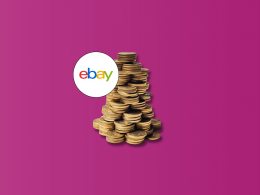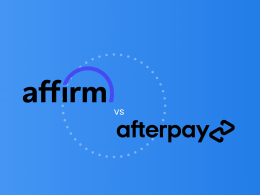In recent years, the concept of ‘buy now, pay later’ has taken the world of commerce by storm. One of the leading names in this area is Afterpay, which allows customers to purchase goods and services and spread the payment over four installments. It’s becoming increasingly popular as an alternative to traditional payment methods, with users appreciating the convenience, flexibility, and ease of use. For customers, it’s the perfect solution to pay for their purchases over time without interest or fees. And for retailers, it’s an efficient way to provide buyers with more options. Moreover, Afterpay accounting can be managed flawlessly, just like any other payment gateway.
Whether you’re a newbie trying to figure out how it works or an experienced shopper looking to save money, this beginner’s guide to Afterpay is here to help. We’ll look at how Afterpay works and what you need to know to make the most of it.
Contents:
4. Disadvantages of using Afterpay
5. Tips for finding the best deals with Afterpay
What is Afterpay?
Afterpay is an online payment system that allows customers to purchase items and have them shipped to their homes without having to pay for the items upfront. Instead, customers can split the payment into four equal installments over six weeks. Afterpay doesn’t charge any interest or fees for using their service, making it a great way to save money when shopping online.
Note: Late fees may be the only charges you could face if your scheduled payments aren’t processed successfully, and you don’t make your payment through another method after receiving a notification. For US shoppers, late fees are capped at 25% of the order value.
The payment system is available in the United States, Australia, New Zealand, and the United Kingdom. In the United States, it’s available at major retailers such as Best Buy, Target and Walmart, connectable with PayPal.
Afterpay works with Amazon and a variety of smaller online retailers specializing in clothing, jewelry, beauty products, and more. You can also connect Afterpay to your Shopify store.
To use Afterpay, customers must create an account by signing up with an email address or connecting their Facebook or Google account.
How does Afterpay work?
For retailers
By offering Afterpay as a payment option, sellers can increase their customer base and attract new customers who may not have been able to afford their products otherwise. It also provides sellers with a simple and streamlined payment process, which can reduce the risk of late payments and missed payments. Here’s how to add Afterpay as a payment option for the online store:
Step #1. Sign up for an Afterpay merchant account
The first step is to sign up for an Afterpay merchant account. This can be done by filling out an application on the Afterpay website. Afterpay will review the application and approve the merchant if they meet the eligibility criteria.
Step #2. Integrate Afterpay into the e-commerce platform
Afterpay can be easily integrated into the seller’s e-commerce platform. Afterpay offers integration options for several popular platforms, including Shopify, Magento, WooCommerce, and BigCommerce. The seller will need to follow the integration instructions provided by Afterpay to set up the payment option on their website.
Step #3. Display the Afterpay logo
Once Afterpay is integrated into the seller’s website, they can display the Afterpay logo on their product pages and checkout page. This will let customers know that Afterpay is an available payment option.
Step #4. Receive payments
After a customer makes a purchase using Afterpay, the seller will receive the full payment from Afterpay, minus a commission fee. The Afterpay processing fee is 6% + $0.30 per transaction.
Step #5. Manage refunds and returns
If a customer requests a refund or return, the seller will need to process the refund through their e-commerce platform. Afterpay will adjust the customer’s payment schedule accordingly, and the seller will receive a refund of the commission fee.
Connect all business units, e-commerce platforms and Afterpay, to one source of truth to track the real cash flow across all channels. Synder records sales into your accounting system, so you always see which platform the money came from, helps with the reconciliation process by detecting any entry errors and makes sure the final P&L report looks clean and clear.
Check what Synder can offer you by visiting our webinar or testing its features with a 15-day free trial.
For customers
Now, let’s look at how Afterpay works in more detail.
To get started, customers need to create an Afterpay account, which involves providing basic details such as their name, email address, phone number, and payment details, and download the app from the App Store, Play Market, or directly from the Afterpay website.
Once the account is created, customers can browse the online retailers that accept Afterpay. When the order is created, at checkout, the customer can select Afterpay as the payment option, and the website will redirect the user to the Afterpay platform, where they’ll be prompted to enter the payment details. Once the payment details are confirmed, the user will be redirected back to the retailer’s website to complete the purchase.
Afterpay divides the online payment into four equal installments, with the first payment equal to 25% of the total purchase amount due at the time of purchase. The remaining amounts are due every two weeks. Afterpay usually sends customers reminders when payments are due, and customers can also view their payment schedule in their Afterpay account.
Customers can use their debit card, credit card, or PayPal account for online payments. Afterpay doesn’t accept cash payments. A valid form of identification, such as a driver’s license or passport, is also required when making payments.
Afterpay reserves the right to suspend or terminate a customer’s account if they fail to fulfill due payments.
Who can use the Afterpay app?
Afterpay is available to customers who are at least 18 years of age and have a valid payment method. This payment method can be a debit or credit card, but it must be in the customer’s name and issued by a bank or financial institution. Customers must also have a valid email address and phone number to create an Afterpay account.
Afterpay is available in several countries, including the United States, Australia, Canada, New Zealand, and the United Kingdom. However, the availability of Afterpay may vary depending on the retailer and location, such as specific grocery stores that accept Afterpay.
It’s important to note that while Afterpay doesn’t require a credit check, it uses an internal system to assess a customer’s ability to make payments. If a customer has a history of missed payments or unpaid debt, they may not be able to use Afterpay.
Benefits of using Afterpay
Using Afterpay for purchasing gains momentum, as it’s beneficial for customers in many ways:
Budgeting and flexibility
The Afterpay app enables customers to spread the cost of their purchases over four installments, which can make it easier to budget and manage expenses. It can be particularly helpful for larger purchases that might not be affordable upfront. The flexibility of Afterpay means that customers can choose the payment schedule that works best for them, making it easier to pay off their purchases over time.
No interest
Afterpay doesn’t charge any interest on payments made on time. This means that customers can avoid the high-interest rates associated with traditional credit cards and personal loans. It also makes it easier to budget for payments as customers know exactly how much they’ll owe each time.
Increased purchasing power
Afterpay can increase a customer’s purchasing power by allowing them to make purchases that they may not be able to afford otherwise. This can be particularly useful for customers who need to make an essential purchase but may not have the funds available upfront.
Learn how to increase your Afterpay limit.
No additional fees
There are no additional fees associated with using Afterpay, provided customers make their payments on time. Customers only need to pay the amount due in each installment, which makes it easier to budget for payments.
Return policies
Afterpay offers a flexible return policy, where customers can return products for a refund or exchange within the retailer’s return policy. The returned products will be refunded to the customer’s Afterpay account, and the remaining payment installments will be adjusted accordingly.
Learn more about the benefits of the Amazon-Afterpay combination.
Disadvantages of using Afterpay
While Afterpay offers several benefits, it is important to consider the potential disadvantages before using the service.
Risk of overspending
Afterpay can make it tempting to spend beyond your means since you are not required to pay the full amount upfront. It can be easy to accumulate debt if you are not careful with your spending and repayment habits.
Late fees and penalties
If you miss a payment or fail to make a payment on time, Afterpay charges late fees. These fees can add up quickly and increase the overall cost of your purchase. Additionally, if you miss multiple payments, your Afterpay account may be blocked, preventing you from making further purchases until the outstanding balance is cleared.
Limited acceptance
While Afterpay has grown in popularity, not all retailers accept it as a payment option. This can limit your choices when shopping, and you may not be able to use Afterpay for certain purchases or from your preferred merchants.
Limited payment amount
Afterpay has a maximum purchase limit of $1,500 per transaction, which may not be enough for larger purchases. Customers may need to use other payment methods, such as credit cards or personal loans, for more expensive purchases.
Tips for finding the best deals with Afterpay
When shopping with Afterpay, you might want to know about deals and discounts. Here are a few tips that might help you get the most out of your Afterpay shopping experience.
Look for retailers that offer discounts for using Afterpay
Many retailers offer promotions and discounts that can be combined with Afterpay. Look for coupon codes or other promotions that can help reduce the cost of your purchase. Some retailers also offer special discounts for Afterpay users, so keep an eye out for these.
Sign up for email newsletters
You can find a lot of retailers offering exclusive discounts and promotions to their newsletter subscribers. Consider signing up for them to receive these offers.
Shop off-season
Shopping for products off-season can be a great way to get a good deal. Retailers often reduce prices on products that are out of season, such as winter coats in the summer or swimwear in the winter.
Follow retailers on social media
Many retailers announce special deals and promotions on their social media channels. Follow your favorite stores to stay up-to-date on the latest offers.
Use Afterpay responsibly
Ensure you can afford the payments and understand the terms and conditions of your agreement with Afterpay. Avoid making purchases that you cannot afford, and make sure you pay your installments on time to avoid late fees.
Explore the Difference Between Afterpay and Affirm.
Alternatives to Afterpay
While Afterpay is a popular buy now, pay later service, it’s not the only option available to consumers. Some of the other popular alternatives to Afterpay include Klarna, Quadpay, and Affirm. These services work in a similar way to Afterpay, allowing customers to split their payments into installments. However, each of these services has its own unique features and benefits, such as lower fees or longer payment periods.
In addition to these services, customers may also consider using traditional credit options such as credit cards or personal loans. Credit cards offer a higher credit limit than Afterpay, and they often come with rewards programs or other incentives. However, they typically come with interest rates, which can make them more expensive in the long run.
Personal loans can also be an option for those who need to make a larger purchase. These loans offer a fixed interest rate and a set repayment period, making it easier for customers to budget and plan their payments. However, personal loans may require a credit check and a longer application process, which can make them less accessible than buy now, pay later services like Afterpay, prompting customers to explore options at major retailers, such as investigating does Walmart have AfterPay.
Conclusion
Afterpay is a great way to shop online without having to worry about interest or fees. It’s easy to use and offers a variety of benefits, from the ability to spread out payments over time to the convenience of having items shipped directly to your home.
As with any financial decision, it’s essential to weigh the pros and cons of using Afterpay and to consider other alternatives that may be available. By understanding how Afterpay works and its benefits and drawbacks, customers can make an informed decision about whether it’s the right payment option for them.
Overall, buy now, pay later services like Afterpay can be a useful tool for managing expenses, but they should be used responsibly and in moderation. With a few simple tips and tricks, you can find the best deals and discounts when shopping with Afterpay. So get ready to save money and time with Afterpay!







.png)
